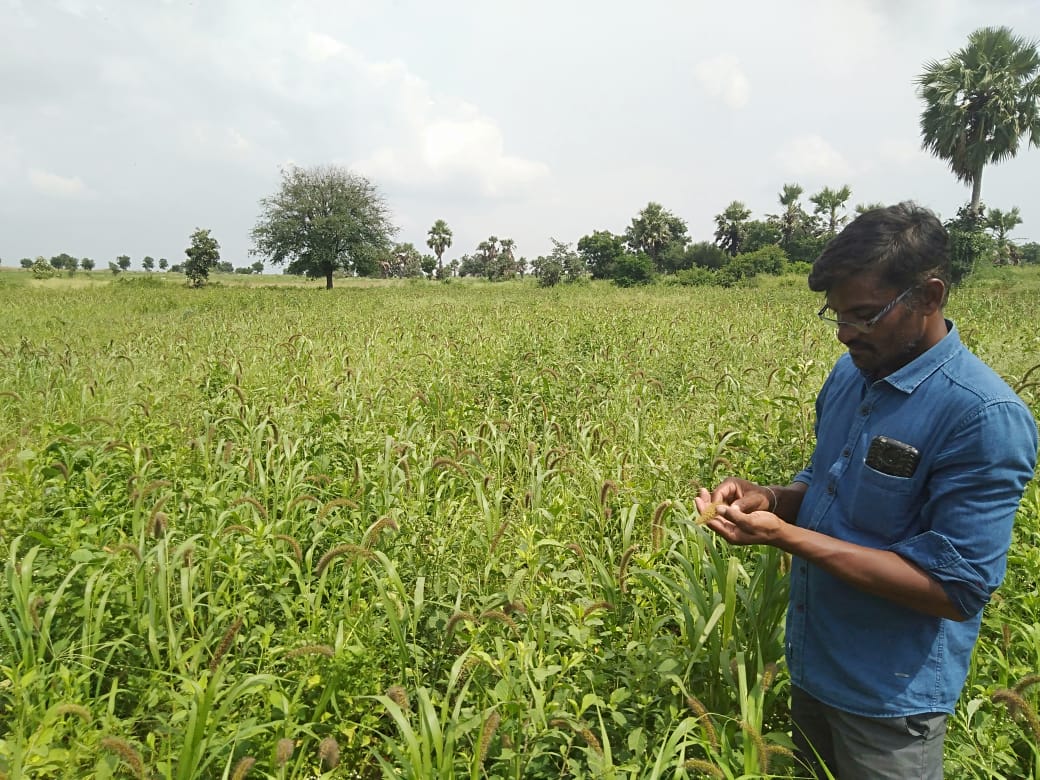During the years 2014-2018, 4259 farmers committed suicide in Telangana state, India. According to the national crime records bureau (NCRB), financial crisis and societal pressure are two major factors that drives farmers to such drastic measures.
The Department of Agriculture and Co-operation statistics show that 83 % of farmers in Telangana state are small scale and marginal; means their land owning sizes are between 2.47 Acres to 9.88 Acres. Cotton is an important non-food crop accounting for 32 percent of total GCA (Gross cropped area) which is equal to 4.39 Million Acres; based on Cotton Corporation of India statistics in 2016. According to the 29th parliamentary standing committee reports on Agriculture, chemical pesticides demand in the state reached 4,135 Metric Tons during the years 2015-2016. The increasing costs for seeds and pesticides are the main reasons for financial debts among small scale and marginal farmers despite several welfare schemes introduced by government like Agriculture Investment Support Scheme (Rythu Bandhu) and crop insurance scheme (Rythu Bima) in 2018.
There are two major root causes for farmers’ suicide Telangana state are
1. Financial problems; 2. Societal pressure
1. Financial problems: According to ‘India Spend’ analysis report, governmental data demonstrated that nearly 70% of agriculture households in India spend more than they earn on average each month. This pushes the households towards debts which are the primary reason for more than half of all committed suicides by farmers, nationwide. In Telangana 89% of agriculture household are in debits which are higher than national average 52%. (Source: Indiaspend.com article on June 27, 2017). Most of them are from small scale and poor farmer families.
Debts are mainly due to High Input Cost in farming and Marketing problems to sell Farm Yield.
Because of the genetically modified seeds usage, farmers are not able to produce seeds for next crop that means they should invest money to buy seeds every year. Additionally these seeds will only give good yield when a high dose of toxic chemicals are used. The farmers need to buy these chemicals from the same seed company. Already farmers lost their indigenous seed varieties because of less cultivation in fields. The high demand for food worldwide pulls farmers into competitive market to produce more food. To produce more food, we need to use high yielding seeds and cultivate it in Mono crop culture farming methods. Mono crop culture cultivation increases the risk for virus/pest attacks. So, more toxic chemicals to tackle virus are needed. This situation is creating more profits for seeds and pesticide companies but it is becoming economical burden for farmers.
Unlike other sectors in India, Farmers don’t have any control over maximum selling price of their products in market. The Government will decide the Minimum support price based on the recommendations from ‘commission for agriculture costs and prices’ in the beginning of year. There is a wide gap between farmers to consumers in market chain because of middle person’s involvement. It is minimizing profits in agriculture sector.
2. Societal pressure: Farmers are facing pressure from society in different stages of life. Family related issues, marriage related issues, poverty, social norms etc. are only some of the reasons farmers feeling stressed. Thus, parents don’t wish to see their children becoming farmers. The social status is seen as low. The cast system in India is creating huge pressure on untouchable and marginalized farmers to get credits from financial institutions.
Consequences:
Wrong perception about farming among farmers and youth: The Negative results and zero profits in farming are increasing urban migration for livelihood from villages. Youth and farmers are highly migrated community to urban areas. According to UN, India’s urban population is going to become 900 million by 2050 and it is clearly indicating the massive dropouts in farming and that adding to urban areas.
Financial problems in the farmer families: Losing breadwinner in families will lead to other financial debts. High interest rates and money lender exploitation will show to negative growth on socio economic conditions of the family.

